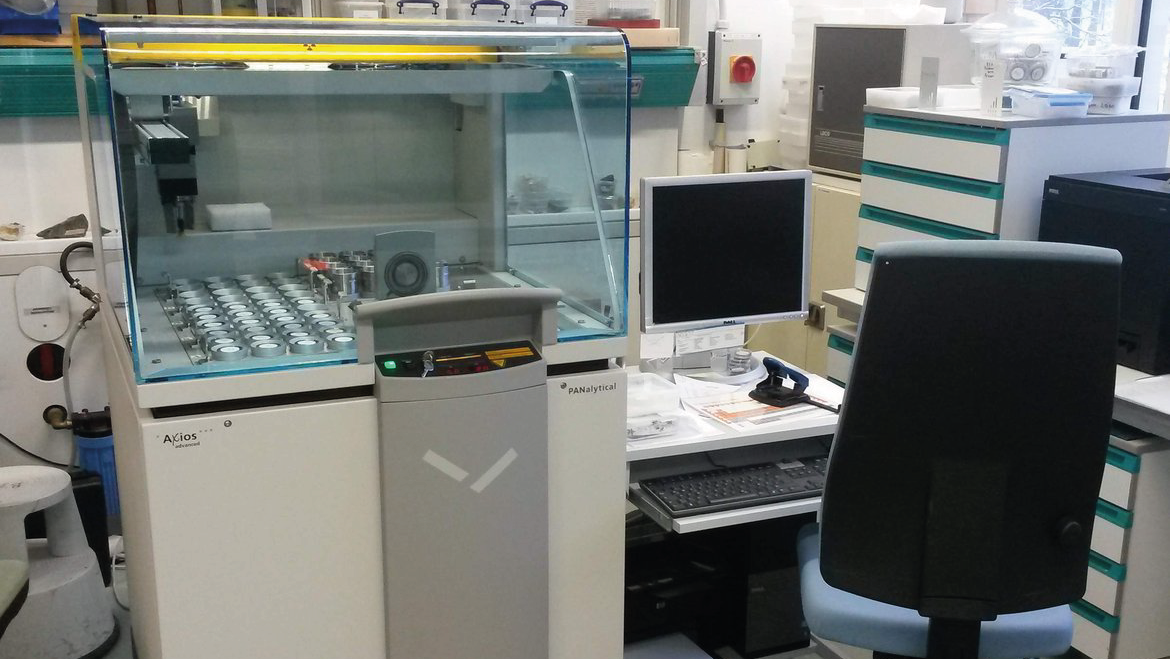X-Ray Fluorescence Spectroscopy (XRF)
Contact:
Web:
Infrastructure belongs to:
For routine X-Ray fluorescence analysis, powdered sample material is fused to a glass disc. Therefore, the powered samples (grain sizes < 62 µm), as well as two Fluxana-samples are dried at ~100 °C, weighed, and melted on different heaters at temperatures between 400-1150 °C. The melt is then quenched to a glass disc and analyzed. We analyze major elements (wt% oxide) and some trace elements (ppm). Analyses are done with a PANalytical AXIOS Advanced.
The XRF Lab is associated to the ElMiE Lab. Information on how to apply for analyses and the general terms and conditions can be found here and here.
Categories
Disciplinary Keywords
Instrumentation
Laboratory instrumentation
Instrument
-
X-Ray Fluorescence Spectrometer
X-Ray Fluorescence spectrometer (XRF: Primary X-Rays are used to excite (fluoresce) X-rays in the specimen. A fused disc or pressed pellet is used for the determination of major element concentrations or trace element abundances in a bulk specimen. The X-ray detector utilizes a set of diffracting crystals specially positioned to detect one characteristic X-ray at-a-time. This sequential measurement of X-rays is termed Wavelength Dispersive Spectroscopy (WDS). Additional information available at "http://www.nmnh.si.edu/minsci/labs/xrf.htm" (Source: Global Change Master Directory (GCMD). 2023. GCMD Keywords, Version 16.3. Greenbelt, MD: Earth Science Data and Information System, Earth Science Projects pision, Goddard Space Flight Center (GSFC) National Aeronautics and Space Administration (NASA). URL (GCMD Keyword Forum Page): https://forum.earthdata.nasa.gov/app.php/tag/GCMD+Keywords)
Relationships
- is part of
- is related to
